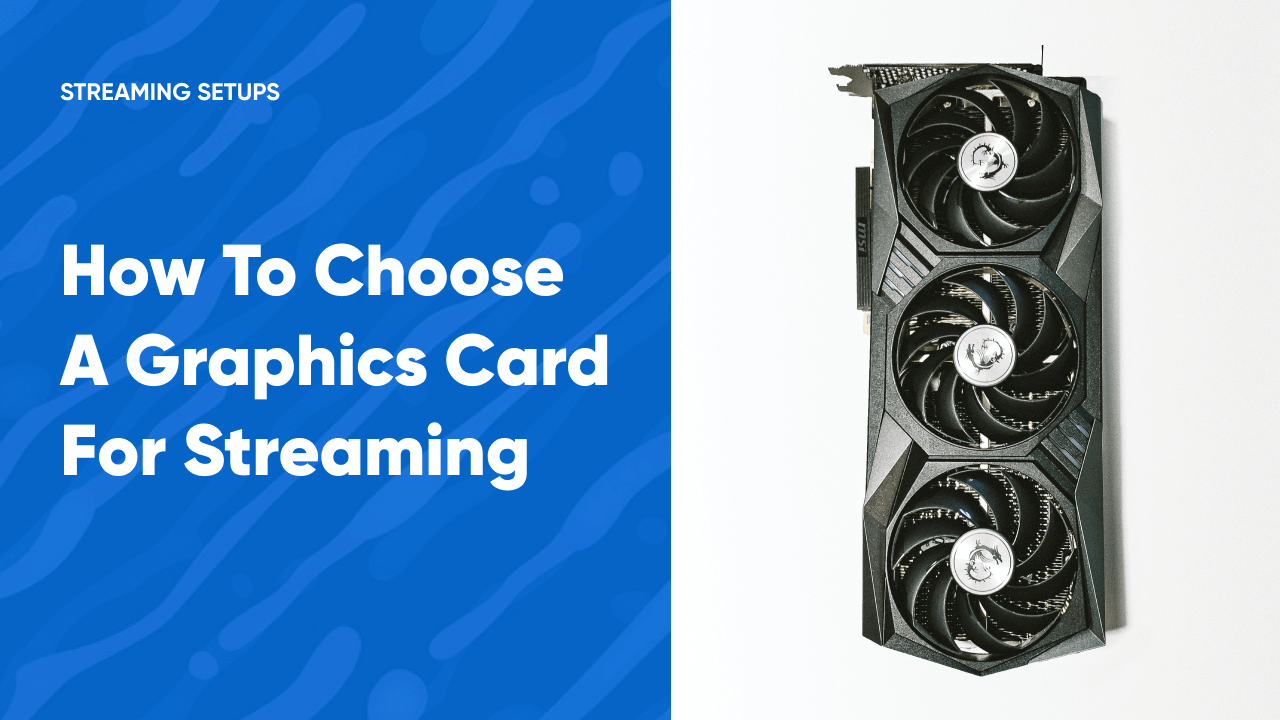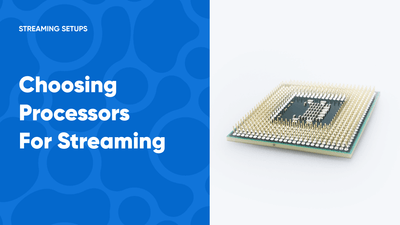
Choosing the right graphics card is key to a top-notch streaming experience, ensuring your broadcasts are smooth and high-quality, even with demanding games. But what makes a GPU the best fit for streaming, and how do you pick the right one for your setup? This guide breaks down the essentials, making it easy for everyone to understand. We'll cover what you should look for in a graphics card and suggest some great options to enhance your streaming without the technical jargon. Let's dive in!
Best GPUs for Streaming
-
Nvidia GeForce RTX 4090 - Highest Performance
For those who demand the best, the RTX 4090 leads the pack. It's incredibly powerful, with a speed of 2.52 GHz and 24 GB of advanced memory, making it ideal for the most demanding games and creative work.
-
Nvidia GeForce RTX 4070 Super - Best Value
If you're looking for great performance without spending a fortune, the RTX 4070 Super is a smart pick. With 12 GB of memory and speeds up to 2.48 GHz, it offers excellent gaming and streaming quality at a more accessible price.
-
Nvidia GeForce RTX 4060 Ti - Balanced Choice
For a mix of affordability and performance, the RTX 4060 Ti is a solid option. With 8 GB of memory and a boost speed of 2.54 GHz, it provides a great gaming experience without stretching your budget too thin.
-
Nvidia GeForce RTX 3060 Ti - Budget-Friendly Performance
The RTX 3060 Ti is a little older but still a contender, offering good performance for gamers on a budget. Its 8 GB of memory is plenty for most games and streaming tasks.
-
AMD Radeon RX 7600 - Great for Beginners
For those just starting out or with modest needs, the AMD Radeon RX 7600 is an affordable entry point. It supports 1080p gaming and streaming with 8 GB of memory and a base speed of 2250 MHz, making it a solid choice for newcomers.
What is a Graphics Card?
A graphics card is an essential component of your computer that specializes in processing and displaying images, videos, and animations on your screen. It's like a specialized brain dedicated to all things visual, translating data into the graphics you see in games and media.
Some graphics cards are built right into the main processor of the computer, sharing its resources, while others are separate entities with their own memory. These dedicated graphics cards typically offer enhanced performance for demanding tasks, such as playing advanced video games or editing high-resolution videos, but they also use more power and come with a higher price tag. Each type, whether integrated or standalone, is crucial for tailoring your computer’s visual performance to your needs.
Does GPU Affect Streaming?
If you're curious about whether a better graphics card will improve your streaming quality, let's get into the details. Your computer's central processor (CPU) does a lot of the work when it comes to streaming, but the graphics card (GPU) has an important role too. It teams up with the CPU, focusing on certain tasks to boost the image quality and help your computer run more smoothly.
Here are the perks of having a dedicated graphics card for your streaming setup:
-
Boosts Video Quality. A good graphics card can speed up how fast your computer processes and improves videos, making everything you stream look clearer and crisper.
-
Ensures Smoother Streams. With a dedicated GPU, your streams can run more smoothly, especially if you're broadcasting high-action scenes or streaming in high definition. This means your viewers get to enjoy a buffer-free experience.
-
Gives Your Main Memory a Break. By handling the graphics-heavy lifting, a dedicated graphics card takes the pressure off your computer's main memory, allowing it to run more efficiently.
Do you absolutely need a dedicated GPU for streaming? Not always, but having one can significantly enhance your streaming quality, even if it's on the more affordable side.
What to Consider Before Buying a GPU?
When looking for a new graphics card, it's easy to get lost in the sea of technical terms. Here's a simpler breakdown of what to consider, making your choice clearer and more straightforward:
-
Memory Speed and Type: Think of this as how fast and efficiently the graphics card can handle data, impacting how quickly images load and appear on your screen. Newer types like GDDR6 offer better performance, so look for these if you're into gaming.
-
Memory Size (VRAM): This is like the graphics card's own storage space for creating images. For most modern games, you'll want at least 6GB of VRAM. Less demanding games might be okay with 4GB.
-
Speed (Clock Speed): This affects how quickly the graphics card can process images. Higher speeds mean smoother gameplay and better performance.
-
Cooling System: Graphics cards come with different cooling systems to keep them from overheating. Some use fans to blow air directly on the card, while others expel hot air out of your computer. Consider your PC's setup and noise tolerance when choosing.
-
Power Needs: Graphics cards list their power requirements in watts. Make sure your computer's power supply can meet these demands.
-
Ray-Tracing: This is a feature for making light and shadows look more realistic in games. It's pretty new and not necessary for all gamers, but if you want the best visual experience in supported games, look for a card that can do ray-tracing.
-
Connectors: Check what type of power connectors the card needs (like 6-pin or 8-pin) and ensure your power supply has them.
-
Heat Output (TDP): This tells you how much heat the card generates and its power consumption. A higher TDP usually means better performance but also more heat and energy use. Make sure your system can handle it.
-
Size (Form Factor): Graphics cards come in different sizes. Make sure the one you choose will fit in your computer case.
-
Processing Cores (CUDA Cores/Stream Processors): These are the tiny units inside the card that process graphics. More cores generally mean a faster card, but only compare these numbers between cards from the same brand and generation.
By focusing on these key features, you can find a graphics card that fits your needs without getting bogged down by the technical details.
Conclusion
For gaming, editing, and streaming in high quality, having the right graphics card can make all the difference. It helps your computer run smoothly by sharing the workload, especially during demanding tasks like playing detailed games or streaming in clear, high definition. When picking a graphics card, the main choice you'll face is between one that's built into your computer or a separate, more powerful version.
It's important to consider a few key things to find the best match for your needs: how much data the card can handle quickly, how much memory it has for storing images, its energy use, how fast it can process images, its size to make sure it fits in your computer, the type of power it needs, how it keeps cool, and whether it supports the latest in lighting effects for ultra-realistic visuals in games.
No matter what you decide, understanding these basics will guide you to a graphics card that enhances your computer's performance, ensuring a smooth, enjoyable experience whether you're gaming, creating, or streaming.




